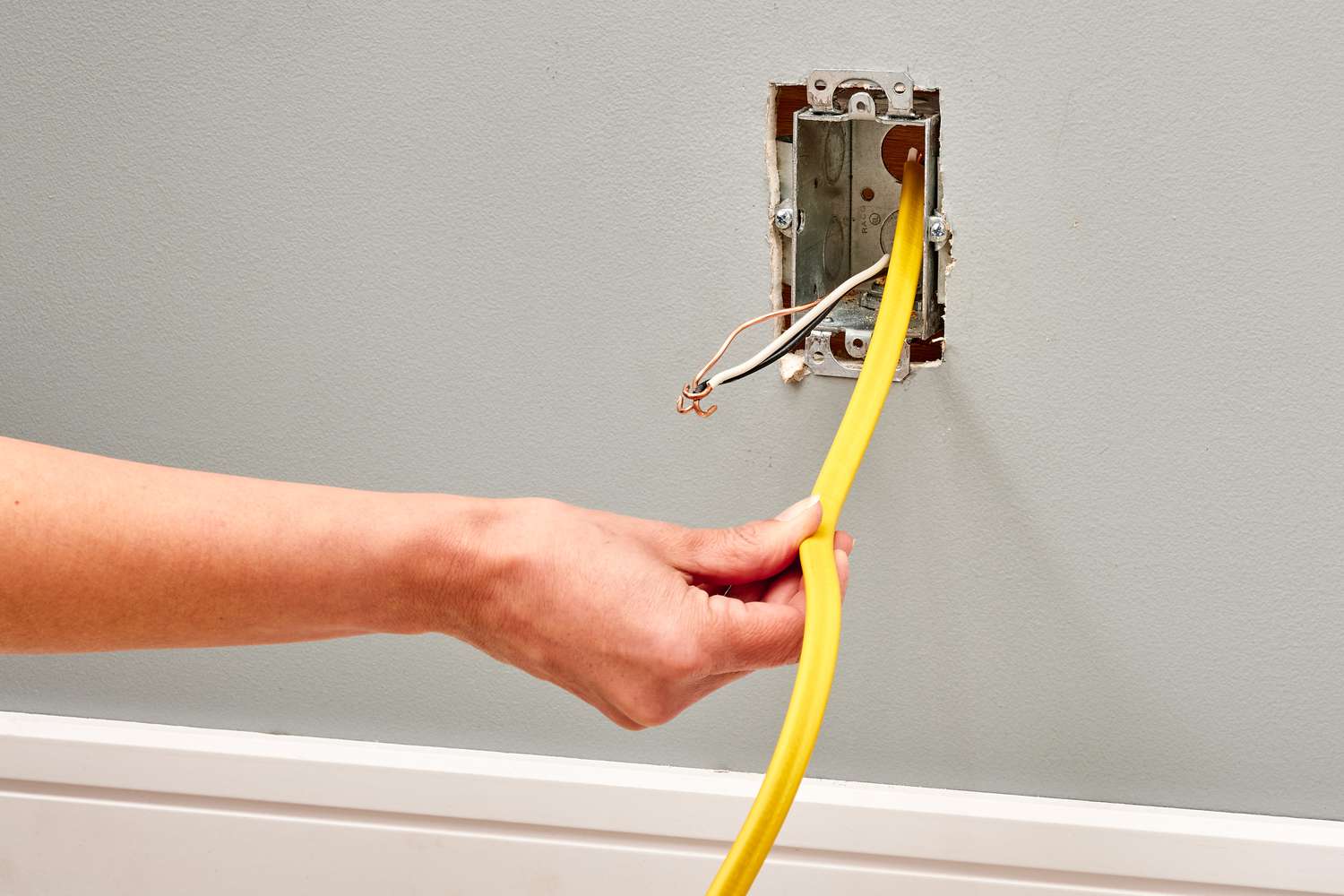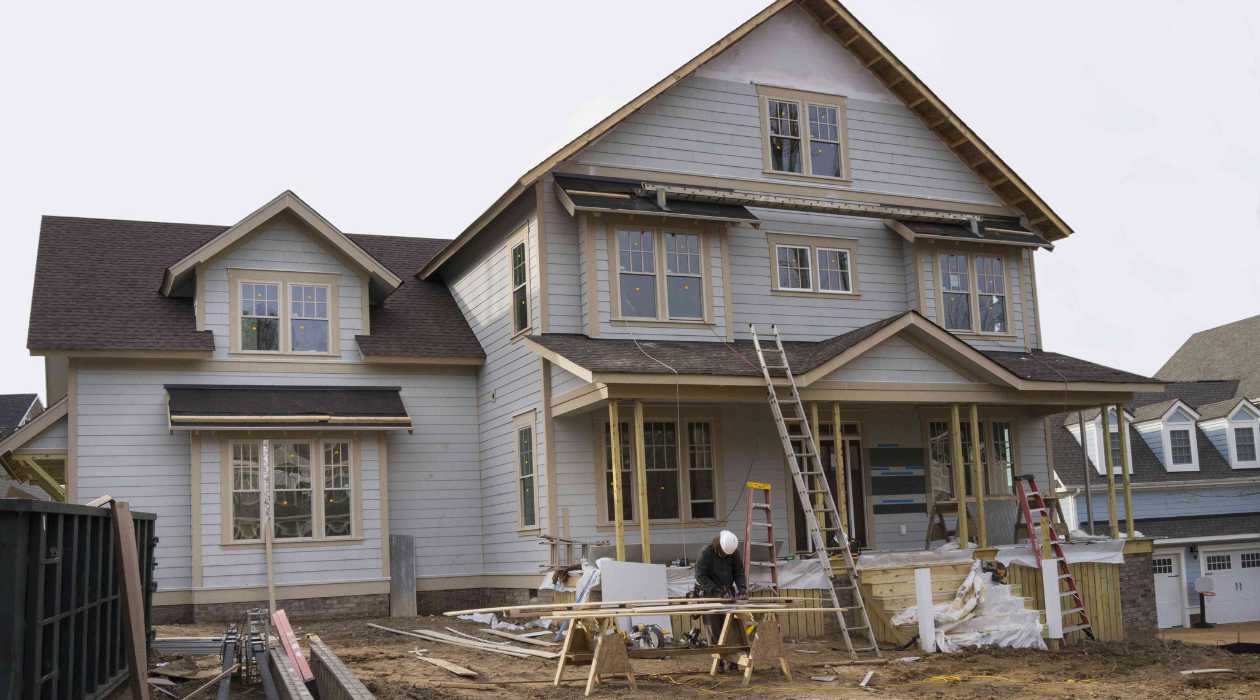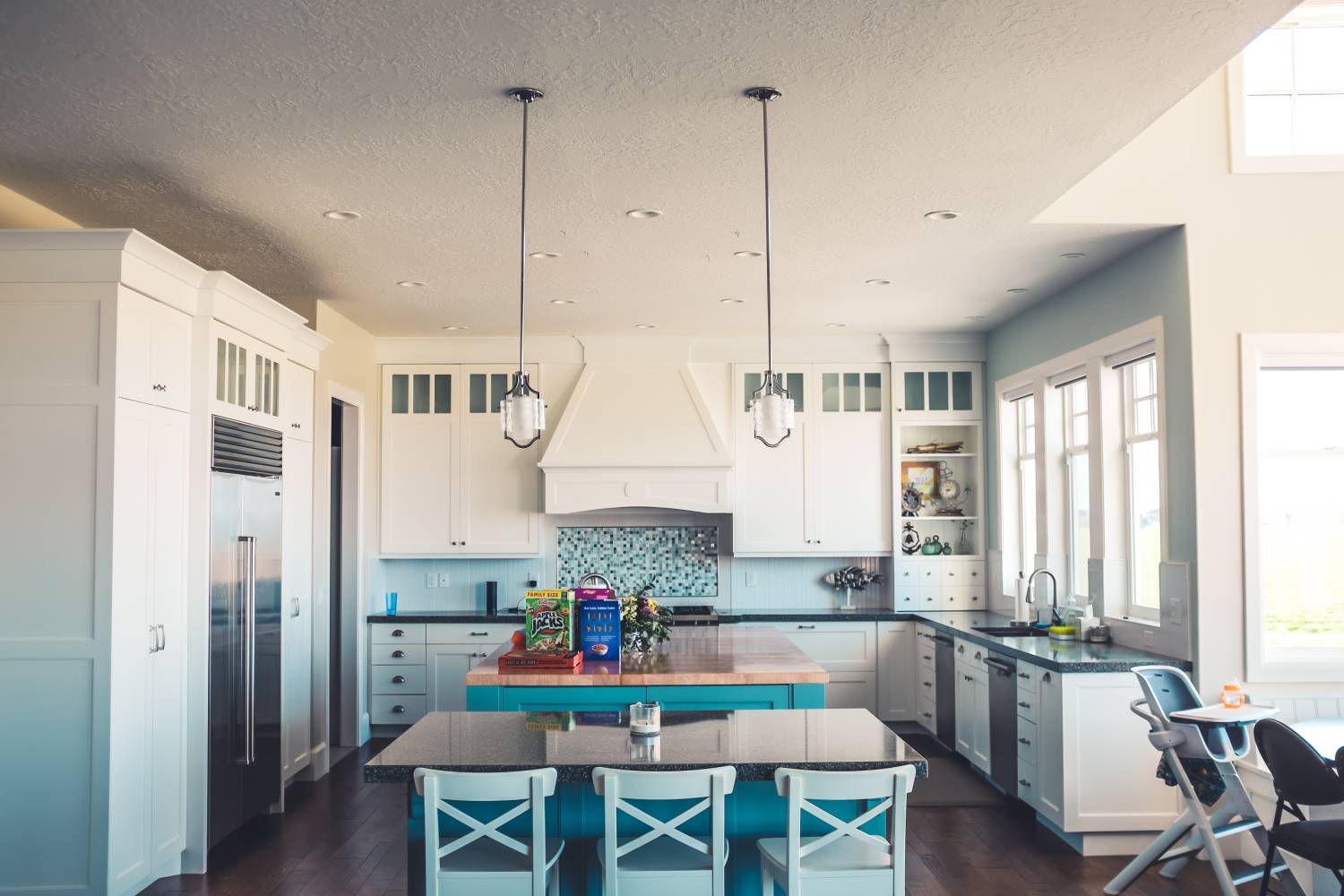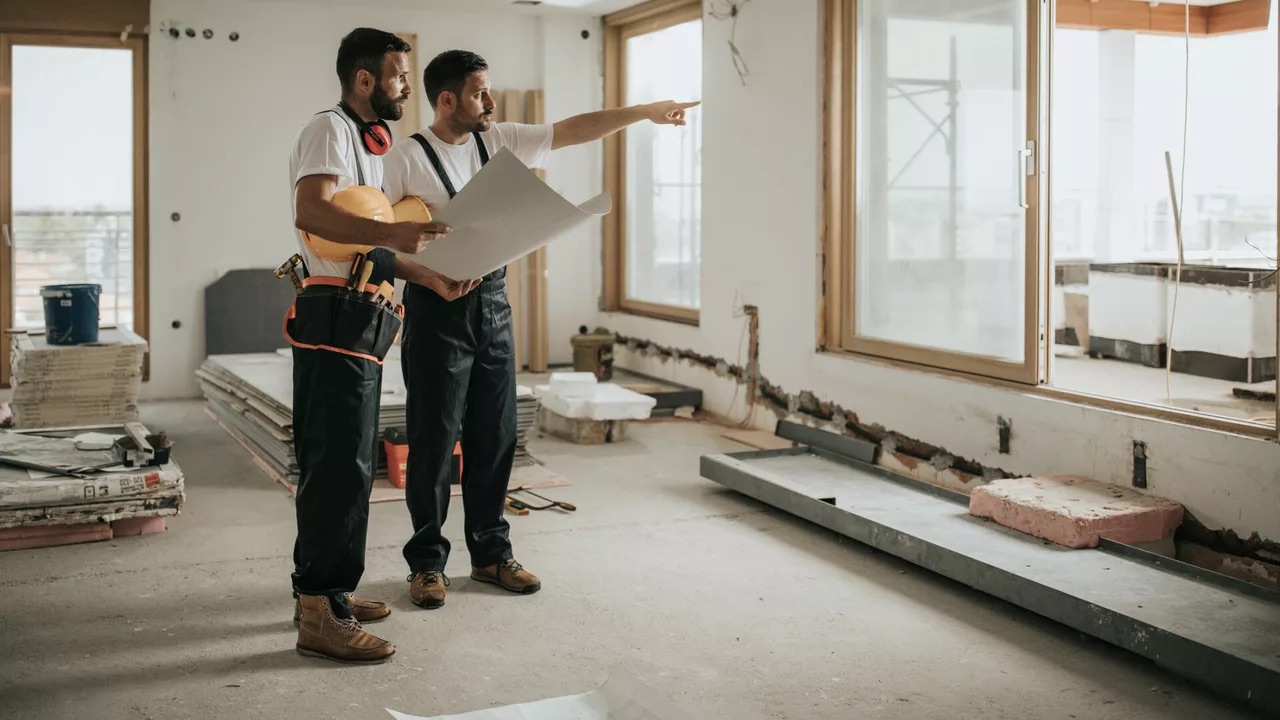Home>Renovation & DIY>Home Renovation Guides>How To Finance Home Renovations


Home Renovation Guides
How To Finance Home Renovations
Modified: October 20, 2024
Learn how to finance your home renovations with our comprehensive guides. Get expert tips and advice for managing your renovation budget effectively. Start your home improvement project with confidence!
(Many of the links in this article redirect to a specific reviewed product. Your purchase of these products through affiliate links helps to generate commission for Storables.com, at no extra cost. Learn more)
Introduction
Embarking on a home renovation project is an exciting endeavor that can breathe new life into your living space. Whether you're dreaming of a sleek, modern kitchen, a luxurious bathroom, or a cozy backyard oasis, renovating your home can elevate its functionality, aesthetics, and value. However, financing such a significant undertaking can be a daunting prospect for many homeowners. Understanding the various financing options available and devising a solid financial plan are crucial steps in turning your renovation dreams into reality.
In this comprehensive guide, we will delve into the intricacies of financing home renovations, offering valuable insights and practical advice to help you navigate this process with confidence. From assessing your renovation needs to selecting the right financing solution and managing your budget effectively, we will cover every aspect of the journey, empowering you to make informed decisions and embark on your renovation project with clarity and assurance.
So, whether you're planning a minor facelift or a major overhaul of your home, join us as we unravel the secrets of financing home renovations, arming you with the knowledge and strategies to transform your living space into the haven you've always envisioned. Let's embark on this enlightening journey together, unlocking the potential of your home and turning your renovation aspirations into a tangible, achievable reality.
Key Takeaways:
- Assess your renovation needs thoroughly to create a solid foundation for your budget and financing decisions. Consider functionality, aesthetics, long-term benefits, and personal preferences to align your renovation with your lifestyle.
- When managing your renovation budget, prioritize essential needs, communicate transparently, and adapt to unforeseen challenges. Embrace proactive decision-making and value engineering to optimize your financial resources and achieve your renovation goals.
Read more: How To Finance Home Improvement
Assessing Your Renovation Needs
Before delving into the realm of financing, it’s essential to conduct a thorough assessment of your renovation needs. Start by envisioning the desired outcome of your project. Are you aiming to modernize your kitchen, expand your living space, or revamp your outdoor area? Identifying the specific areas of your home that require attention will lay the groundwork for a well-defined renovation plan.
Next, consider the practical aspects of your renovation. Evaluate the structural integrity of your home, the functionality of existing fixtures and appliances, and any potential safety or accessibility concerns. By addressing these fundamental aspects, you can ensure that your renovation not only enhances the visual appeal of your home but also improves its overall livability and longevity.
Furthermore, take the time to assess your personal preferences and lifestyle needs. Are you longing for a more open and airy ambiance, or do you seek a cozy and intimate atmosphere? Understanding your aesthetic inclinations and functional requirements will guide the design and layout of your renovation, ensuring that it aligns seamlessly with your lifestyle and resonates with your individual taste.
Additionally, consider the long-term implications of your renovation. Will the proposed changes increase the energy efficiency of your home, reduce maintenance requirements, or boost its resale value? By taking these factors into account, you can make informed decisions that not only fulfill your immediate renovation goals but also yield lasting benefits for years to come.
By meticulously assessing your renovation needs from a holistic perspective, you can lay a solid foundation for the financing phase of your project. This comprehensive understanding of your renovation requirements will not only inform your budgeting decisions but also empower you to explore financing options that are tailored to the specific needs and aspirations of your project.
Setting a Budget
Once you have a clear vision of your renovation needs, the next crucial step is to establish a realistic budget that aligns with your project’s scope and objectives. Setting a budget is a pivotal aspect of the renovation process, as it serves as a guiding framework for all financial decisions and helps prevent overspending or unexpected financial strain.
Begin by conducting thorough research to gauge the costs associated with your proposed renovation. Obtain quotes from reputable contractors, suppliers, and service providers to gain a comprehensive understanding of the financial outlay required for materials, labor, permits, and any additional expenses specific to your project. By leveraging multiple quotes, you can make informed comparisons and ensure that your budget reflects the prevailing market rates and industry standards.
When formulating your budget, it’s imperative to factor in a contingency reserve to accommodate unforeseen expenses or potential adjustments to the scope of work. Allocating a contingency fund, typically around 10-20% of the total project cost, provides a crucial safety net and instills a sense of financial preparedness, shielding you from unexpected financial setbacks.
Moreover, consider the financing costs associated with your renovation, including interest rates, loan fees, and repayment terms. Understanding the financial implications of various financing options will enable you to incorporate these costs into your budget, ensuring that your financial plan encompasses all relevant expenses and obligations.
Additionally, prioritize your renovation needs and allocate your budget accordingly. Distinguish between essential improvements and desirable upgrades, allowing you to allocate resources where they are most needed while accommodating optional enhancements within your financial constraints. By categorizing your renovation priorities, you can optimize the utilization of your budget and ensure that the core aspects of your project receive the necessary financial backing.
By diligently setting a comprehensive and realistic budget, you lay a solid financial groundwork for your renovation journey, fostering a clear understanding of your financial parameters and guiding your subsequent financing decisions with prudence and foresight.
Exploring Financing Options
As you venture into the realm of financing your home renovation, it’s essential to explore the diverse array of financing options available to homeowners. Each financing avenue presents unique terms, benefits, and considerations, allowing you to tailor your choice to align with your financial circumstances and renovation aspirations.
Personal Savings: Utilizing personal savings is a common and straightforward approach to financing home renovations. If you have accrued savings earmarked for such endeavors, leveraging these funds can provide a cost-effective and interest-free solution, eliminating the need for external borrowing and minimizing long-term financial commitments.
Home Equity Loans: Home equity loans, also known as second mortgages, enable homeowners to borrow against the equity accrued in their property. This financing option offers a lump sum with a fixed interest rate, providing predictability and stability in repayment. Home equity loans are suitable for substantial renovation projects and offer the advantage of potentially tax-deductible interest payments.
Home Equity Lines of Credit (HELOC): HELOCs provide homeowners with a revolving line of credit based on the equity in their home. This flexible financing option allows you to borrow funds as needed, offering versatility and convenience in managing renovation expenses. HELOCs typically feature variable interest rates and can serve as a practical solution for ongoing or phased renovation projects.
Refinancing: Refinancing your existing mortgage presents an opportunity to access additional funds for your renovation by replacing your current mortgage with a new loan. This option allows you to capitalize on lower interest rates, adjust your loan term, and tap into your home’s equity to finance your renovation endeavors.
Personal Loans: Personal loans from financial institutions or online lenders offer unsecured financing for home renovations. These loans feature fixed interest rates and predetermined repayment terms, providing a streamlined and accessible financing solution without leveraging home equity.
Government Programs and Incentives: Investigate government-sponsored programs, tax credits, and incentives designed to promote energy-efficient or sustainable home improvements. These initiatives may offer financial assistance, rebates, or tax benefits for qualifying renovation projects, reducing the financial burden and fostering eco-friendly, cost-effective upgrades.
By exploring these diverse financing options, you can identify the most suitable approach that aligns with your financial goals, renovation scope, and long-term financial well-being. Each financing avenue presents distinct advantages and considerations, empowering you to make an informed decision that harmonizes with your unique financial circumstances and renovation vision.
Consider a home equity loan or line of credit to finance your renovations. These options typically offer lower interest rates and longer repayment terms compared to personal loans or credit cards.
Choosing the Right Financing Solution
As you navigate the multitude of financing options available for your home renovation, selecting the right financing solution entails a comprehensive evaluation of your financial objectives, renovation scope, and long-term financial implications. Each financing avenue presents distinct advantages and considerations, necessitating a thoughtful and informed decision-making process.
When choosing the appropriate financing solution, consider the following key factors:
- Interest Rates and Terms: Evaluate the interest rates, repayment terms, and overall cost of financing associated with each option. Compare the long-term financial implications, including total interest payments and potential fluctuations in interest rates for variable-rate loans.
- Equity Considerations: Assess the impact of leveraging your home equity for financing. Consider the potential risks and benefits of using your property as collateral, weighing the stability of fixed-rate options against the flexibility of variable-rate financing.
- Repayment Capacity: Determine the affordability of loan repayments within your current financial framework. Factor in potential changes in income, expenses, and other financial obligations to ensure that the chosen financing solution aligns with your long-term financial stability.
- Project Scope and Timeline: Align the financing solution with the scope and timeline of your renovation project. Consider the flexibility and accessibility of funds required for phased or ongoing renovations, ensuring that the chosen financing avenue accommodates the evolving financial needs of your project.
- Tax Implications and Incentives: Explore potential tax benefits, deductions, or incentives associated with certain financing options. Consult with financial advisors or tax professionals to understand the tax implications of your chosen financing solution and leverage available incentives to maximize cost savings.
Furthermore, seek transparency and clarity in the terms and conditions of each financing option. Thoroughly review loan agreements, disclosure statements, and repayment schedules to gain a comprehensive understanding of the financial commitment and obligations associated with your chosen financing solution.
Ultimately, the right financing solution should align with your renovation goals, financial capacity, and long-term financial well-being. By conducting a diligent assessment of the key considerations and implications of each financing option, you can make an informed decision that harmonizes with your unique circumstances and empowers you to embark on your renovation journey with confidence and financial prudence.
Applying for Financing
Once you’ve identified the most suitable financing solution for your home renovation, the next step involves initiating the application process with the chosen financial institution or lender. Applying for financing demands meticulous preparation, attention to detail, and a thorough understanding of the requirements and procedures involved in securing the necessary funds for your renovation project.
Here are essential steps to guide you through the financing application process:
- Documentation Gathering: Compile all necessary documentation, including proof of income, tax returns, employment records, and asset statements. If you’re leveraging home equity, you may need to provide property appraisals, mortgage statements, and related documentation to support your loan application.
- Loan Application Submission: Complete the loan application forms provided by your chosen lender. Ensure accuracy and completeness in filling out the application, and be prepared to provide detailed information about your renovation project, including cost estimates, timelines, and scope of work.
- Financial Assessment: Expect the lender to conduct a comprehensive financial assessment to evaluate your creditworthiness, debt-to-income ratio, and overall financial stability. Be prepared to provide explanations for any discrepancies or financial challenges that may impact your loan application.
- Property Evaluation: If you’re utilizing home equity or property-based financing, the lender may conduct a thorough evaluation of your property to assess its value, condition, and marketability. Anticipate property inspections, appraisals, and related assessments as part of the financing approval process.
- Review and Negotiation: Carefully review the terms and conditions presented by the lender upon approval of your financing application. Negotiate any aspects of the loan agreement that may warrant discussion, such as interest rates, repayment terms, or fee structures, to ensure that the final terms align with your financial objectives and expectations.
- Finalizing the Agreement: Upon reaching mutual agreement on the financing terms, proceed to finalize the loan agreement and complete all necessary documentation. Be attentive to the details of the loan contract, repayment schedules, and any additional disclosures provided by the lender before formalizing the financing arrangement.
Throughout the application process, maintain open communication with the lender, promptly address any requests for additional information, and seek clarity on any aspects of the financing arrangement that may require further explanation or clarification.
By navigating the financing application process with diligence and thorough preparation, you can streamline the approval process and secure the necessary funds to propel your renovation project forward, setting the stage for the realization of your renovation aspirations.
Managing Your Renovation Budget
Effectively managing your renovation budget is a vital component of ensuring the success and financial sustainability of your home improvement project. As you embark on the renovation journey, diligent budget management empowers you to make informed financial decisions, mitigate potential overspending, and maintain financial stability throughout the renovation process.
Here are essential strategies for managing your renovation budget with prudence and foresight:
- Regular Financial Reviews: Conduct regular reviews of your renovation budget to track expenses, compare actual costs against budgeted amounts, and identify any deviations or potential oversights. This proactive approach allows you to address financial variances promptly and make necessary adjustments to align with your overall budget.
- Contingency Utilization: Deploy your contingency reserve judiciously to address unforeseen expenses or modifications to the scope of work. Exercise discretion in utilizing the contingency fund, prioritizing essential needs and unforeseen challenges that may arise during the renovation process.
- Transparent Communication: Maintain open communication with contractors, suppliers, and service providers to ensure clarity regarding costs, invoicing, and any potential changes in the scope of work. Transparent communication fosters a collaborative approach to managing expenses and facilitates proactive resolution of financial concerns.
- Value Engineering: Explore opportunities for value engineering, seeking cost-effective alternatives and efficient solutions without compromising the quality or integrity of your renovation. Engage with your project team to identify potential savings, optimize material usage, and streamline construction processes to maximize the value of your budget.
- Adherence to Priorities: Prioritize essential renovation needs and allocate resources accordingly. Maintain focus on the core objectives of your renovation, ensuring that budget allocations align with the fundamental aspects of your project while accommodating optional enhancements within your financial constraints.
- Adaptation to Unforeseen Challenges: Anticipate and adapt to unforeseen challenges that may impact your renovation budget. Embrace flexibility and resilience in navigating unexpected obstacles, leveraging proactive problem-solving and resourceful decision-making to manage financial constraints effectively.
Furthermore, stay attuned to emerging opportunities for cost savings, such as rebates, discounts, or energy-efficient upgrades that may yield long-term financial benefits. Embrace a proactive and discerning approach to managing your renovation budget, leveraging financial insights, and prudent decision-making to optimize the financial outcomes of your project.
By conscientiously managing your renovation budget and embracing a proactive, adaptable mindset, you can navigate the financial complexities of your renovation project with confidence, ensuring that your financial resources are maximized to realize the full potential of your home improvement aspirations.
Conclusion
Congratulations on embarking on the enlightening journey of financing your home renovation. As you’ve delved into the intricacies of assessing your renovation needs, setting a realistic budget, and exploring diverse financing options, you’ve gained valuable insights and strategic knowledge to propel your renovation aspirations forward.
By meticulously assessing your renovation needs, you’ve laid a solid foundation for a well-defined renovation plan that harmonizes with your lifestyle, aesthetic preferences, and long-term aspirations for your living space. Your comprehensive understanding of the financial parameters and implications of your renovation project has empowered you to navigate the realm of financing with confidence and prudence, ensuring that your financial decisions align with your unique circumstances and renovation vision.
As you venture into the application process for securing the necessary funds, remember to approach the endeavor with meticulous preparation, attention to detail, and clear communication with your chosen financial institution or lender. By navigating the application process with diligence and foresight, you can streamline the approval process and secure the necessary resources to propel your renovation project forward.
Throughout the renovation journey, managing your budget with prudence, adaptability, and proactive decision-making will be instrumental in ensuring the financial success and sustainability of your home improvement endeavor. Embrace transparency, value engineering, and adherence to priorities as guiding principles in managing your renovation budget, maximizing the value of your financial resources and realizing the full potential of your renovation project.
As you apply the knowledge and strategies gleaned from this comprehensive guide, remember that your home renovation is not merely a financial investment, but a transformative journey that enriches the comfort, functionality, and beauty of your living space. With a clear vision, informed financial decisions, and a steadfast commitment to your renovation goals, you are well-equipped to bring your dream home to life.
So, with confidence and determination, embark on this transformative endeavor, knowing that you possess the knowledge, insight, and strategic acumen to finance your home renovation with clarity, prudence, and an unwavering commitment to realizing the full potential of your living space.
Frequently Asked Questions about How To Finance Home Renovations
Was this page helpful?
At Storables.com, we guarantee accurate and reliable information. Our content, validated by Expert Board Contributors, is crafted following stringent Editorial Policies. We're committed to providing you with well-researched, expert-backed insights for all your informational needs.















0 thoughts on “How To Finance Home Renovations”